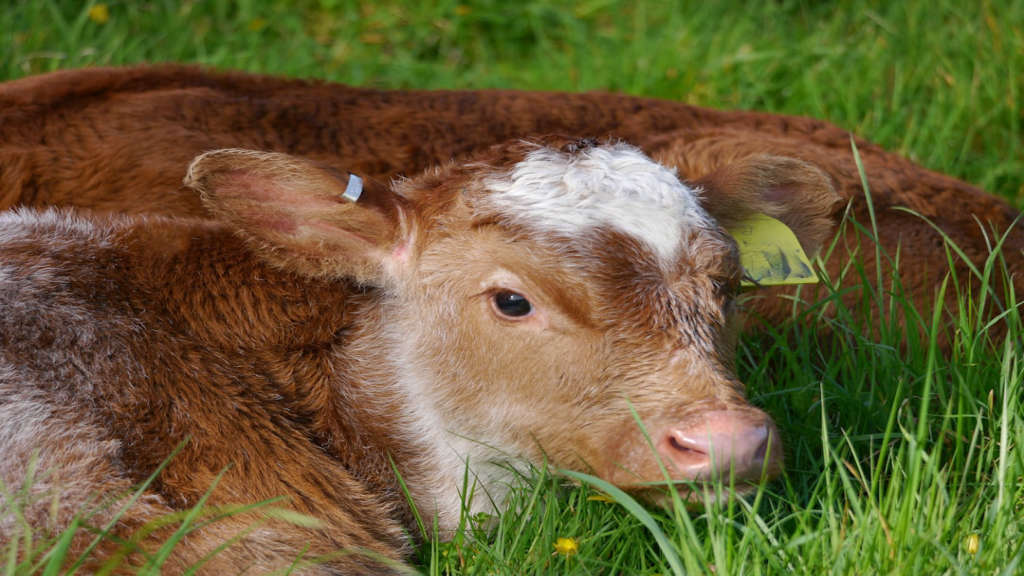In today’s interconnected world, the landscape of trade continuously evolves, affecting various sectors, including agriculture. As nations grapple with economic shifts and changing consumer preferences, the future of livestock export emerges as a complex yet vital topic. Understanding the dynamics of this market is essential for stakeholders aiming to navigate these turbulent waters effectively.
Main Points
- The impact of global policies on livestock export.
- Consumer preferences and their influence on market trends.
- Technological innovations shaping the future of animal husbandry.
- Sustainability practices in the livestock export industry.

Emerging Trends in Livestock Export: Adapting to Global Demand and Regulatory Changes
The livestock export sector is undergoing significant transformation as it responds to shifting global demand and evolving regulatory frameworks. As nations become increasingly interconnected, the need for adaptive strategies has never been more pressing. This article explores the latest trends in the livestock export market, shedding light on how producers can navigate this complex landscape effectively.
Understanding Global Demand
One of the primary drivers of change in the livestock export sector is the dynamic landscape of global demand. Countries are no longer isolated markets; they are part of a vast network where preferences and requirements can shift overnight. To stay competitive, exporters must recognize and adapt to these changing demands. Factors influencing global demand include:
- Consumer Preferences: Today’s consumers are increasingly conscious of where their food comes from and how it is produced. Ethical sourcing and sustainable practices are now paramount.
- Economic Growth in Emerging Markets: As economies rise, so does the appetite for high-quality meat products. Countries investing in livestock importation are more discerning in their choices.
- Technological Advancements: Improvements in logistics and transportation technologies have made it easier to reach distant markets, increasing opportunities for exporters.
Navigating Regulatory Landscapes
In addition to demand fluctuations, regulatory changes play a pivotal role in the livestock export domain. Exporters must be equipped to handle a myriad of regulations that vary by region. Compliance is not merely a checkbox; it is a fundamental aspect of maintaining market access. Significant considerations include:
- Health and Safety Standards: Exporters must ensure their products meet the stringent health regulations of importing countries to prevent disruptions.
- Trade Agreements: Staying informed about international trade agreements can unveil new opportunities or create barriers, thus influencing export strategies.
- Animal Welfare Laws: With animal welfare becoming an increasingly significant concern globally, adherence to humane treatment guidelines is essential.
Strategies for Adaptation
To excel in this evolving marketplace, livestock exporters should consider implementing several key strategies. These practices can serve as a roadmap for success amidst uncertainty:
- Invest in Research: Understanding consumer behaviors and regulatory trends will enable exporters to make informed decisions.
- Enhance Supply Chain Efficiency: Streamlining logistics and distribution channels can reduce costs and improve response times to market changes.
- Cultivate Partnerships: Building relationships with local stakeholders in importing countries can provide valuable insights and facilitate smoother transactions.
In conclusion, as the livestock export industry faces unprecedented challenges and changes, the need for flexibility and awareness is crucial. Exporters who embrace these emerging trends—balancing global demand with regulatory compliance—will find themselves well-positioned for sustainable success. Understanding these aspects will ensure that they not only survive but thrive in an increasingly competitive environment.

Sustainable Practices in Livestock Export: Ensuring Compliance and Enhancing Market Competitiveness
In recent years, the sustainable practices implemented in the livestock export industry have gained tremendous attention. Stakeholders within this sector are constantly seeking ways to improve their operations while ensuring compliance with stringent regulations. The challenge lies in balancing profitability with ethical standards. As consumer awareness grows, obtaining a competitive edge in the market becomes more challenging yet crucial.
Understanding Compliance Regulations
Compliance with international regulations is the bedrock of a reputable livestock export business. Regulations often encompass animal welfare, environmental sustainability, and food safety measures. Understanding these requirements is not as straightforward as it may seem. Different countries have varying standards, which can lead to confusion for exporters. For instance, some nations emphasize welfare practices while others prioritize environmental impacts.
To ensure compliance, businesses must continually update their knowledge regarding regulations. This might require hiring experts or investing in training resources. Ignoring such responsibilities can lead to harsh penalties and damage to a company’s reputation. Nonetheless, navigating the compliance landscape is essential for long-term sustainability.
Enhancing Market Competitiveness
Moreover, businesses focusing on sustainability not only comply with regulations but also enhance their market competitiveness. Consumers are increasingly inclined to support companies that demonstrate a commitment to ethical practices. This shift in consumer behavior prompts businesses to actively promote their sustainable practices. However, merely stating that a company is ‘sustainable’ is insufficient. Transparency is vital.
Branding efforts targeted at communicating sustainable practices can differentiate a company in a crowded market. Utilizing certifications and engaging in public discussions on sustainability can foster trust among consumers. This makes them more likely to choose one brand over another, especially when they perceive genuine efforts towards improvement.
Challenges in Implementation
Even though there are clear advantages, implementing sustainable practices poses its own challenges. Most businesses operate under tight margins and are constantly pressurized to reduce costs. Investing in sustainable technologies or practices often requires significant capital, which can be daunting.
Some might argue that these initial investments may not yield immediate financial benefits. However, over the long term, the reduction in operational risks and the potential for attracting a loyal consumer base can offer lucrative returns. Hence, a fundamental shift in mindset may be necessary for livestock exporters who prioritize sustainability.
Conclusion
To sum up, incorporating sustainable practices in livestock export is not only about meeting compliance standards; it is about reimagining the future of the industry. Businesses that prioritize sustainability can find innovative ways to enhance their market competitiveness while maintaining ethical operations. In this ever-evolving landscape, the challenge will always lie in the execution of these practices effectively. Therefore, firms must be proactive, informed, and innovative in their approach to truly thrive.
| Key Focus Areas | Sustainable Practices |
|---|---|
| Animal Welfare | Ensuring humane treatment and proper conditions. |
| Environmental Impact | Reducing carbon footprint and promoting eco-friendly practices. |
| Market Transparency | Engaging consumers with clear communication on sustainability efforts. |
This content discusses sustainable practices in livestock export, highlighting compliance and market competitiveness while maintaining an engaging and professional tone.
Conclusion
In conclusion, the complexities surrounding livestock export cannot be ignored. The challenges faced by exporters are multifaceted, yet the opportunity for growth remains significant. Many factors influence this sector, from international regulations to market demands. Moreover, consumers are becoming increasingly aware of the origins of their food, which may drive changes in the livestock export landscape. By embracing these changes and adapting to new market realities, we can ensure a more sustainable and effective approach to livestock export. This journey requires collaboration among stakeholders, but the potential rewards are worthwhile. As we move forward, staying informed and proactive will be key in navigating this ever-evolving industry.
Frequently Asked Questions
What are the main types of livestock that are exported?
The main types of livestock that are exported include cattle, sheep, goats, pigs, and poultry. Each type is exported for various purposes, including breeding, meat production, and dairy.
What regulations govern livestock exports?
Livestock exports are governed by a range of regulations, including animal health and welfare standards, export permits, and country-specific import requirements. It is essential for exporters to comply with both domestic and international regulations to ensure compliance.
What are the benefits of livestock export for farmers?
Livestock export provides farmers with access to international markets, often resulting in higher prices for their animals. It also allows farmers to diversify their income sources and helps in the development of the livestock industry by promoting best practices.